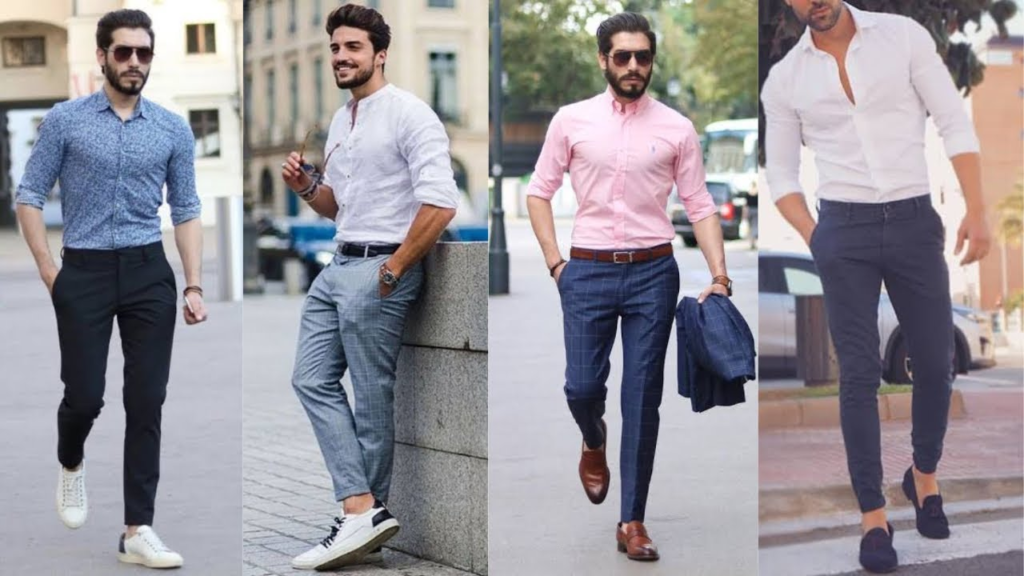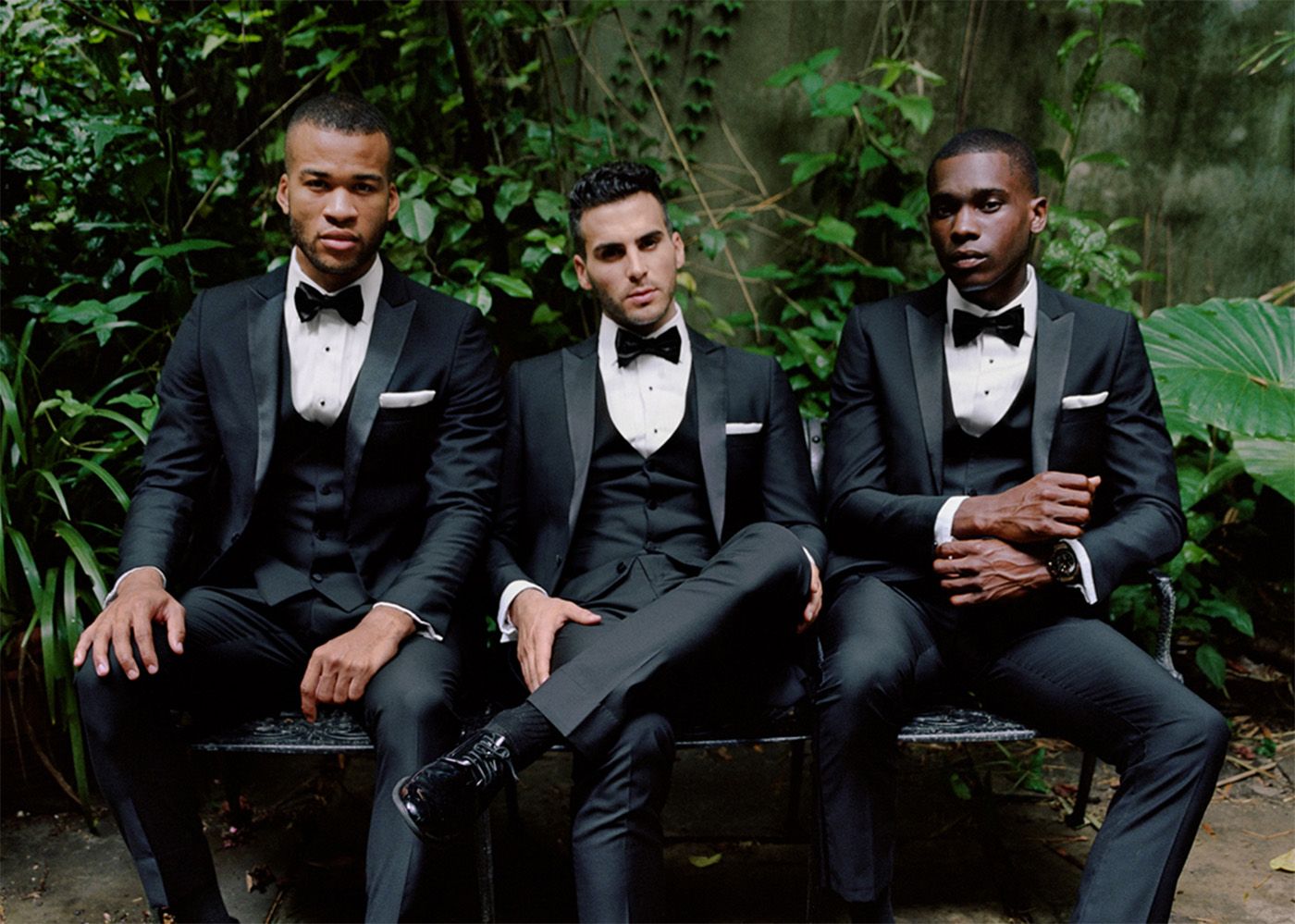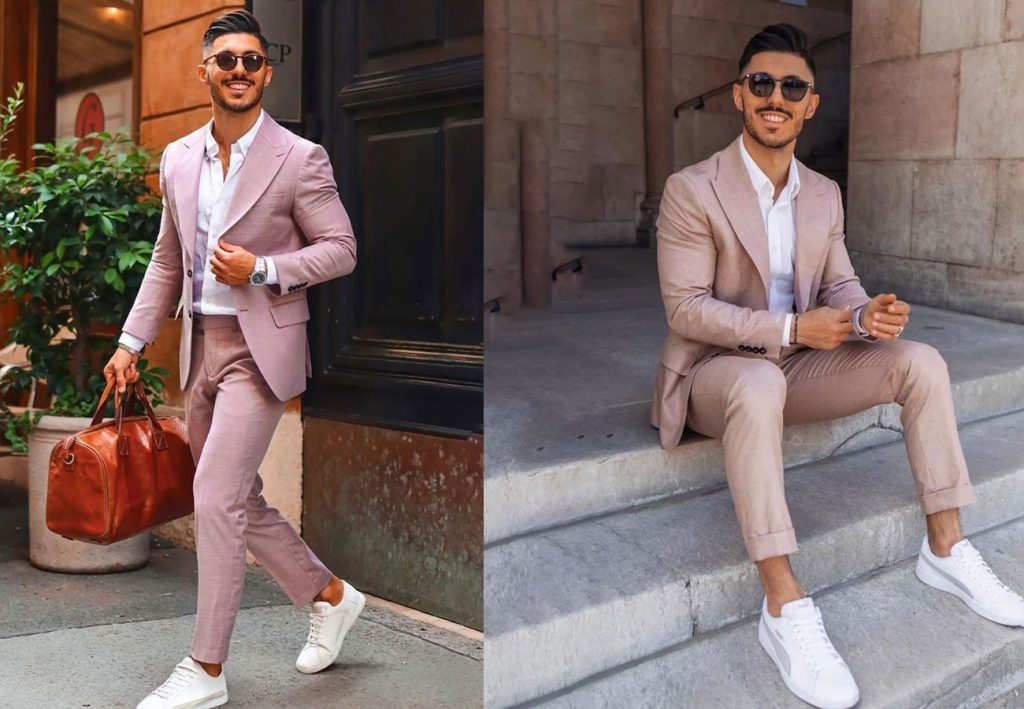
Formal dress for men has always been an essential part of the modern wardrobe, with its timeless appeal and the ability to make a man look dashing, confident, and sophisticated. Whether it’s a wedding, a business meeting, or a black-tie gala, knowing how to choose the right formal dress for men is key to making a lasting impression. In this detailed guide, we will explore everything you need to know about formal dress for men, including the different types, accessories, how to fit, and how to make the best choices to look your best. This guide is tailored to give you the insight and confidence needed to master the art of men’s formal wear.
Understanding Formal Dress for Men: What Is It?
Formal dress for men refers to clothing that is designed for events where high levels of decorum and sophistication are expected. These events might include corporate affairs, gala dinners, weddings, or even upscale social gatherings. Formal dress typically incorporates structured suits or tuxedos, accompanied by dress shirts, ties, and formal shoes. It aims to present a polished and sharp appearance, showing professionalism and elegance. The importance of formal dress cannot be overstated—it plays a vital role in how you are perceived by others and often dictates your success in certain social and professional contexts.
When dressing formally, the main goal is to look refined, well-groomed, and appropriate for the occasion. Whether it’s the precision of your suit, the neatness of your shoes, or the finesse of your accessories, each element of formal wear contributes to your overall image.
The Importance of Choosing the Right Formal Dress for Men
Choosing the right formal dress for men is critical because it directly influences how you feel and how others perceive you. A well-chosen suit or tuxedo can give you an air of confidence, whereas poor fitting or inappropriate attire can detract from your image and comfort. Selecting an outfit that aligns with your body type, the formality of the event, and your personal style ensures that you look your best while feeling comfortable.
For example, wearing a classic black tuxedo at a black-tie event instantly enhances your image, making you look polished and put together. On the other hand, choosing a mismatched or ill-fitting suit can make you appear unprepared and lackluster.
Types of Formal Dress for Men
The world of formal dress for men is diverse, with various options available. Whether it’s for a wedding, a corporate event, or a formal evening out, different types of formal wear serve different purposes. Here are the most popular types:

1. Suits: The Classic Formal Dress for Men
The suit is the quintessential formal dress for men and is suitable for a variety of formal occasions. From business meetings to semi-formal events, a well-tailored suit is a must-have in any man’s wardrobe.
- Single-Breasted Suits: Single-breasted suits are classic and versatile, featuring a row of buttons down the front. This style is flattering on most body types and is suitable for almost all formal occasions. It is the most common choice for business meetings, casual dinners, and formal weddings.
- Double-Breasted Suits: Double-breasted suits feature two rows of buttons and typically offer a more structured, authoritative look. These suits are ideal for more formal or traditional events. They tend to look sharp and sophisticated, making them a great choice for gala events or high-powered business meetings.
Suits can be made from different fabrics such as wool, cotton, or linen, with wool being the most common choice for year-round wear.

2. Tuxedos: The Ultimate Formal Dress for Men
Tuxedos represent the pinnacle of formal dress for men and are reserved for the most exclusive events like weddings, award ceremonies, and black-tie galas. A tuxedo includes specific details such as satin lapels, a formal dress shirt, a bow tie, and patent leather shoes.
- Black Tuxedos: Black tuxedos are the most traditional and classic option for black-tie events. They exude a level of sophistication and have been a staple of formal wear for decades.
- White Tuxedos: White tuxedos are perfect for warmer weather or for those who want to stand out in a more refined way. They can be paired with black or dark trousers to create a sharp contrast that maintains the formal look while being a bit more eye-catching.
A tuxedo is typically worn with a bow tie and formal patent leather shoes, adding a complete formal vibe that can’t be replicated by other types of formal wear.

3. Dress Shirts: Essential Components of Formal Dress for Men
A well-fitted dress shirt is a vital part of any formal outfit. It provides the foundation for your suit or tuxedo, and the right shirt can complement the overall style.
- Fabric Choices: Popular fabrics include cotton, linen, and blends. Cotton dress shirts are breathable and versatile, making them suitable for almost any formal occasion. Linen shirts are light and airy, ideal for hot climates, while blends may offer extra durability.
- Collar Styles: Collars come in several styles, including point collars, spread collars, and button-down collars. Spread collars are typically worn with a wide tie knot, while point collars are great for narrow tie knots. Button-down collars are more casual but can still work for a smart-casual event.
- Cuffs: Most formal shirts have single or double cuffs. Double cuffs require cufflinks, adding a touch of class to your formal attire. The cufflinks can be simple, elegant, or even personal, allowing for some individuality in your formal look.

4. Blazers and Sport Coats: A Relaxed Formal Dress for Men
Blazers and sport coats provide a slightly more relaxed approach to formal dress for men. They are less structured than suits but still provide a smart, tailored look.
- Blazers: A blazer is often paired with dress pants and can be worn at both semi-formal and formal occasions. Blazers are great for less formal business events or dinner parties.
- Sport Coats: Sport coats are typically a bit more relaxed in fit and can be worn with casual or semi-formal trousers. They’re perfect for events where you want to look polished but don’t want to wear a full suit.
5. Dress Pants: The Foundation of Any Formal Dress for Men
Dress pants are an essential component of formal wear for men. The style, cut, and fit of your trousers play a significant role in your overall appearance.
- Flat-Front Pants: These pants have a sleek and modern look and are generally more popular than pleated options. They provide a streamlined silhouette.
- Pleated Pants: Pleated pants offer more room in the thighs and are often preferred by men with larger builds. They can add a vintage touch to your formal attire.
Dress pants should fit perfectly around your waist and should not bunch or sag. They should also have just enough length to cover the top of your shoe without dragging on the floor.

The Importance of Fit in Formal Dress for Men
The fit of your formal dress for men is arguably the most important factor in looking sharp. Clothes that are too tight or too loose can ruin your overall appearance. Here’s how to make sure your formal dress fits perfectly:
1. Suit Fit
- Slim Fit: A slim-fit suit offers a modern, sharp silhouette. It is ideal for those with a leaner frame and is suited for more fashionable or contemporary events.
- Regular Fit: A regular fit suit offers more room and is often favored by those with broader builds. It’s comfortable yet still stylish for formal occasions.
- Athletic Fit: If you have a muscular frame, an athletic-fit suit is a great choice. It hugs your shoulders and chest while tapering down to a narrower waist, providing a flattering look.
2. Trouser Fit
Trouser fit is just as important as the suit jacket fit. Make sure your trousers sit comfortably at your waist. The length of the trousers should allow for a slight break, meaning the fabric should just touch the tops of your shoes without dragging on the floor.
3. Jacket Fit
A well-fitting jacket should align with your shoulder seams and not feel too tight across the chest or back. The sleeves should end just above the wrist, allowing a little of the shirt cuff to show.
Accessories: Adding the Finishing Touches to Your Formal Dress for Men
Accessories are what make your formal look stand out. The right accessories can add personality to your outfit while maintaining the overall elegance.
1. Ties and Bow Ties
The choice between a tie and a bow tie depends on the occasion. For formal events like weddings and galas, a bow tie is often the preferred choice. A tie is generally more suitable for business or semi-formal events.
2. Cufflinks
Cufflinks are essential for double-cuffed shirts and can be a way to add a personal touch to your formal attire. You can choose between classic silver or gold cufflinks, or opt for unique designs that reflect your personality.
3. Pocket Squares
A pocket square is a small piece of cloth that sits in the breast pocket of your suit jacket. It adds a touch of color and sophistication to your look. You can match the pocket square with your tie or shirt, or even opt for a bold pattern to make a statement.
4. Formal Shoes
Formal shoes like Oxfords, Derbies, and Brogues complete the look. Patent leather shoes are often worn with tuxedos, while matte leather shoes can be paired with suits. Make sure your shoes are polished and in good condition for the best appearance.
How to Maintain and Care for Your Formal Dress for Men
Proper care is essential to ensuring your formal dress for men lasts for many years. Here’s how to maintain your attire:
1. Dry Clean Your Suits Regularly
To maintain the shape and fabric of your suit, dry clean it regularly. However, don’t overdo it—washing your suit too frequently can damage the fibers.
2. Store Your Clothes Properly
Store your formal attire in a cool, dry place. Invest in a good-quality garment bag for your suits and tuxedos to protect them from dust and damage.
3. Polish Your Shoes
Keep your formal shoes in tip-top shape by polishing them regularly. This helps maintain their shine and protects the leather from wear and tear.
4. Iron or Steam Your Shirts
Ensure your dress shirts are free from wrinkles by using an iron or steamer. Pay extra attention to the collar, cuffs, and sleeve seams for a crisp, neat look.
Common Mistakes to Avoid When Choosing Formal Dress for Men
Choosing the wrong formal attire can ruin your overall look. Here are some common mistakes to avoid:
1. Wearing the Wrong Size
Always make sure your formal wear fits properly. A poorly fitting suit or tuxedo can make you look unkempt. If needed, have your clothes tailored for a perfect fit.
2. Ignoring Fabric Quality
Choose fabrics that are appropriate for the season and event. Wool suits are perfect for year-round wear, while linen suits are better for warmer weather.
3. Overdoing Accessories
Don’t over-accessorize. Stick to one or two key accessories, such as cufflinks or a tie clip, to enhance your formal attire without overwhelming it.
4. Choosing the Wrong Footwear
Your shoes should match your formal wear. For a tuxedo, patent leather Oxfords are the go-to choice. For a suit, classic leather Oxfords or Brogues work best.
Conclusion: Mastering the Art of Formal Dress for Men
Understanding how to select, wear, and care for formal dress for men is essential for any man who wants to look his best. Whether you’re preparing for a wedding, business event, or black-tie gala, the right formal wear will help you make a statement of sophistication, elegance, and confidence. By paying attention to the fit, fabric, and accessories, and avoiding common mistakes, you can ensure that your formal dress for men always enhances your appearance.
FAQs:
Q1: What are the most essential items in a formal wardrobe for men?
A1: The essentials include a well-fitting suit, a tuxedo for black-tie events, a crisp dress shirt, a tie or bow tie, formal shoes, and accessories like cufflinks and a pocket square.
Q2: Can I wear a formal dress for men to a casual event?
A2: While formal attire is usually reserved for more sophisticated occasions, some elements like a blazer or dress pants can be styled for a smart-casual look. However, avoid wearing a full tuxedo to a casual event.
Q3: What should I consider when selecting a formal dress for men?
A3: Focus on the occasion, your body type, fit, color, and the fabric of your formal dress. Each element should be appropriate for the event and should complement your personal style.
Q4: How do I care for my formal suit?
A4: Dry clean your suit regularly, store it in a cool place, polish your shoes, and iron or steam your dress shirts. Always use padded hangers to preserve the shape of your jacket.
Q5: How can I make sure my formal dress fits well?
A5: Ensure that your suit or tuxedo fits your shoulders, chest, and waist properly. The sleeves should show a bit of shirt cuff, and the trousers should break just at the top of your shoe. If necessary, get your clothing tailored for the best fit.




